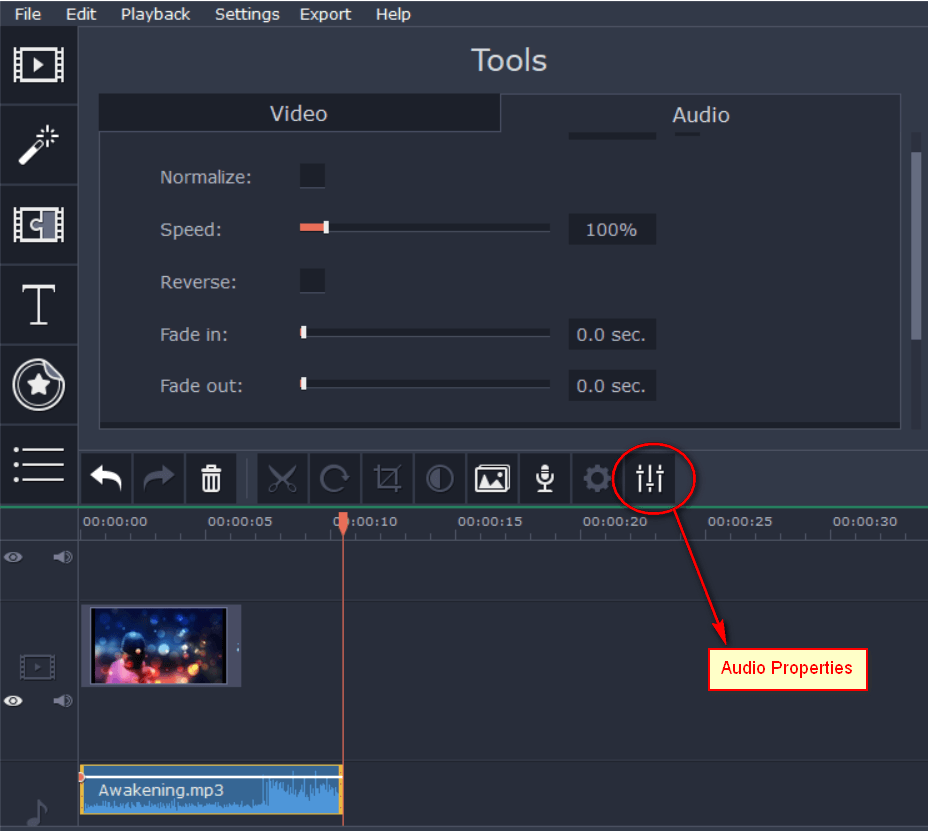

IMOVIE FADE AUDIO HOW TO
Here we will show you how to fade in, fade out and then mix two audio tracks together. This video will take you through how to fade audio in iMovie. Answered by Elizabeth Zboncak on Thu, 9:57 AM Dragging a fade handle at the beginning of a clip creates a fade-in, and dragging a fade handle at the end of a clip creates a fade-out. Drag a fade handle to the point in the clip where you want the fade to begin or end. In the iMovie app on your Mac, position the pointer over the audio portion of a clip in the timeline to reveal fade handles. Answered by Thora VonRueden on Tue, 4:00 AM Step 2: Switch to Audio Inspector and Edit Music. Drag and drop your file to the “My Media” panel and double click on it and select “Clip Adjustment” to open up the Inspector panel. Please follow these simple steps to add a fade effect to your music using iMovie’s Audio Inspector. Video answer: How to fade music/audio in & out on imovie (mac)ĩ other answers Answered by Tracey Konopelski on Sat, 10:09 PM

If necessary, you can change the advanced settings like resolution, aspect ratio and etc. If you want to add audio fade-ins and fade-outs to another different audio clip on the audio track, just select the audio clip firstly, then follow the above steps to add “Fade in Audio” and “Fade Out Audio” filters to the target audio clip.ĥExport the video with fade in/out transitionsĬlick on "Export" button on the main interface to export the final video by format or by device when you completed editing videos. After then, set the duration time to control the change of audio volume. If your video clip contains an audio track, you can select this clip and add “Fade in Audio” and “Fade Out Audio” filters to the target video clip by clicking on “Filter” tab on the main interface. What is more, you are allowed to preview the effect by playing this video.ĤAdd audio fade-ins and fade-outs to the audio track When you add the filters, you can set the duration time of the fade effect to control the gradient effect of the video picture. Select the target video clip and click on “Filter” tab on the main interface, then click “+” button to add “Fade in Video” and “Fade Out Video” filters to the target video clip. You can select a file at first and then click “Insert” button to insert the video behind “Playhead”, or just drag & drop the target files from the “Media Library” of MovieMator to the specific position on the timeline.ģAdd video fade-ins and fade-outs to the video track Method 2: Insert files to the current track. Select the target file and click “+” button, or drag & drop the target file from your "Finder" to append it to the representative track on the timeline. Method 1: Append files to the current track. One is to append files to the timeline and the other is to insert files to the timeline. Video clips should be placed on the video track and audio files should be placed on the audio track. Launch MovieMator and add the target video/audio files to the representative track on the timeline.
IMOVIE FADE AUDIO FOR MAC
It is a quite powerful video editing software for Mac and Windows.ĢAdd video/audio files to the representative track on the timeline
IMOVIE FADE AUDIO INSTALL
1Install MovieMator Video Editorĭownload and install MovieMator from our official website or Mac App Store. This tutorial explains how to fade in and fade out your video and audio tracks.
IMOVIE FADE AUDIO FULL
Audio fade-ins begin with silence and increase to full volume, and fade-outs begin at full volume and decrease to silence. Video fade-ins begin at a natural black screen to the video picture and video fade-outs begin at the video picture to a neutral black screen. As is known to all, fade in and fade out transitions can prevent your video from appearing choppy.


 0 kommentar(er)
0 kommentar(er)
